1. IPO Returns Fade….YTD S&P +25% vs. IPO ETF +6%
SPY ETF vs. IPO ETF
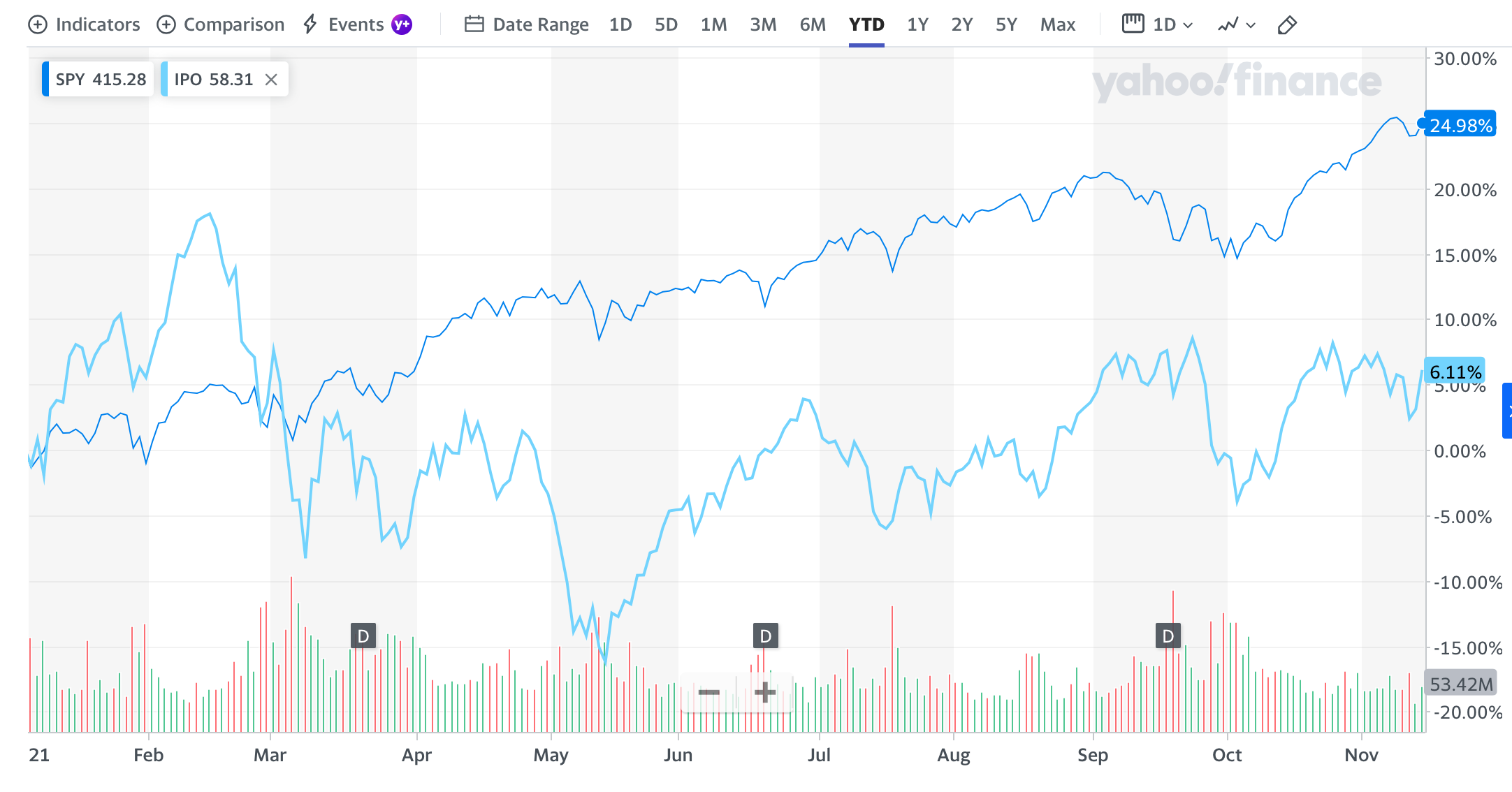
2. Will Shortage of Labor Pull Forward More Robots? ROBO ETF.
ROBO ETF Sideways for 2021
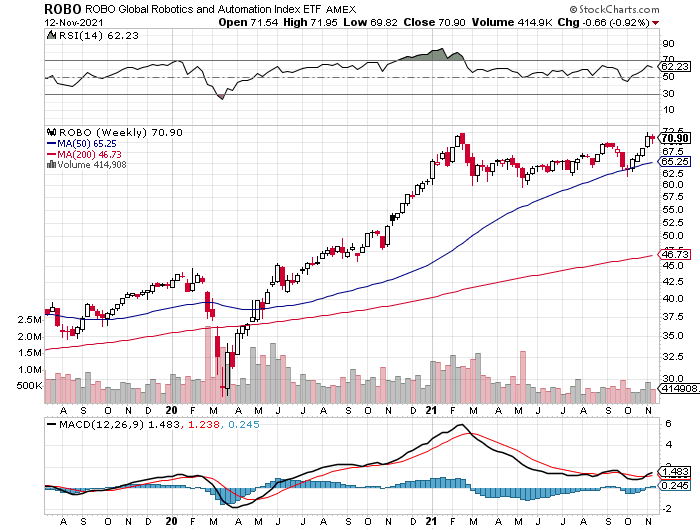
3. Business Owners…Cost or Quality of Labor #1 Problem
Bespoke Investment Group…In addition to inflation concerns, the cost and quality of labor is also a significant factor impeding business outlooks. The percentage of businesses in the monthly NFIB survey reporting that the cost or quality of labor was their single most important problem pulled back in October from highs reached in September by about 6 percentage points, but 34% of respondents still indicated that the quality and cost of labor was their largest concern.
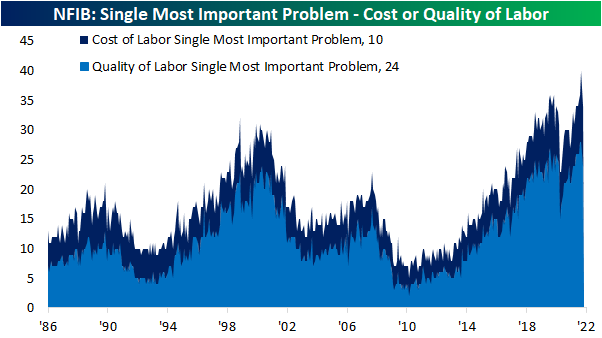
https://www.bespokepremium.com/interactive/posts/think-big-blog/big-charts-of-the-week-11-12-21
4. Binance …$76B a Day Crypto Exchange.
Growth of Traffic


WSJ–By Patricia Kowsmann and Caitlin Ostroff
5. Bondholders Risk $2.6 Trillion Hit on Even a Modest Yield Rise
Duration Risk Back to Record Highs

on Even a Modest Yield Rise
Bloomberg Liz Capo McCormick and Anchalee Worrachate
October 23, 2021
(Bloomberg) — After a wild week on Wall Street that saw inflation expectations reach decade highs, portfolio managers are staring down an ever-more dangerous prospect: A modest rise in yields that inflicts trillions of dollars in losses.
It’s a result of investors’ exposure to duration, a key gauge of risk for bondholders that’s near record highs. Even a half-percentage point jump in yields from here, to roughly the pre-pandemic average in 2019, would be enough to ravage funds of all stripes. It’s a threat with implications across asset classes, from emerging markets to high-flying tech shares.
This scenario is staring investors in the face after 10-year U.S. Treasury yields bumped up against their peak levels of 2021 this week amid wagers the Federal Reserve will start lifting borrowing costs next year.
https://finance.yahoo.com/
6. Retiree Ranks Increase by 3.6m
Reuters-WILL RETIREES COME BACK TO THE LABOR FORCE?
Retiree ranks increased by 3.6 million from February 2020 to June 2021, greater than the 1.5 million retirements that would have been expected under the pre-pandemic trend for retirements, according to the Kansas City Fed. That was driven by a big drop in those moving from retirement back to work, likely because of health concerns. More baby boomers also left the labor market.
Fed Board Governor Michelle Bowman said last month surging retirements “may make it harder, or even impossible in the near term, to return to the high level of employment achieved before the pandemic.”
The tight prepandemic labor market brought some people out of retirement, and economists say that could happen again if infections keep dropping and wages keep rising.
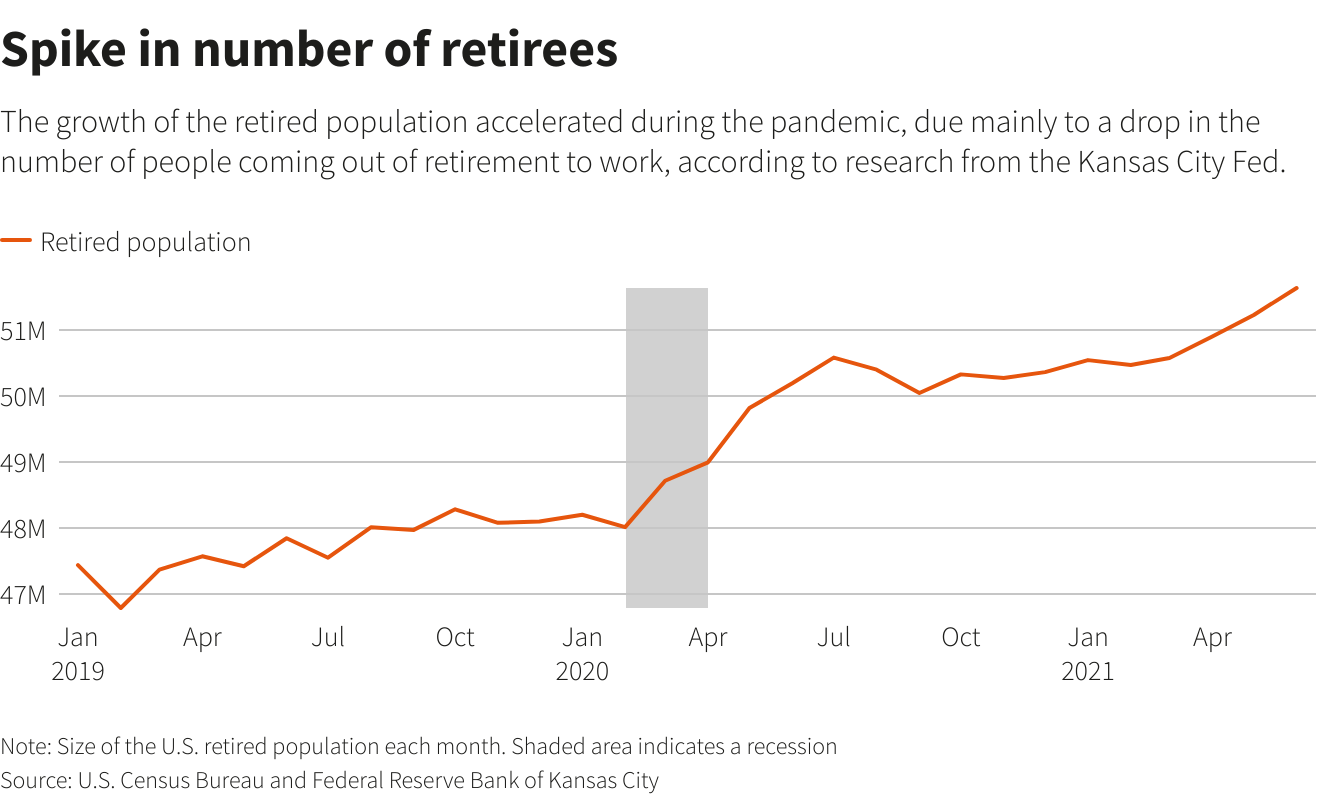
Reuters Graphics
https://www.reuters.com/
7. Retail Sales Double a Decade Ago…Mall Traffic Up 3-5% 2019 Levels.
Barrons–Meanwhile, more Americans started coming out to the mall. Placer.ai mall-traffic statistics show that foot traffic for indoor malls was up 3% in October compared with 2019 levels, and traffic for outdoor malls was up 5%

Mall Stocks Are Back in Fashion as Shoppers Return. How to Play It.By Sabrina Escobar Miranda and Logan Moore
8. But…Black Friday Shopping Poll Favors Online.
Food for Thought: Black Friday shopping plans:
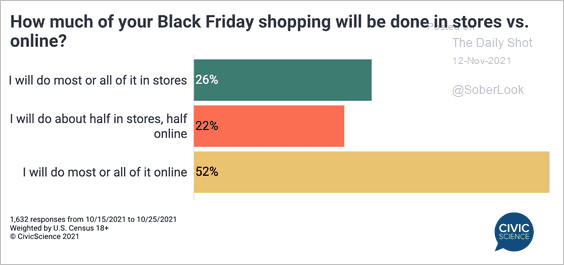
The Daily Shot https://dailyshotbrief.com/
9. Bitcoin creator Satoshi Nakamoto could be unmasked at Florida trial
WSJ-By Paul Vigna
Lawsuit over a $64 billion cache looks beyond the pseudonym to solve the mystery of who created the cryptocurrency
A seemingly run-of-the-mill trial is playing out in Florida: The family of a deceased man is suing his former business partner over control of their partnership’s assets.
In this case, the assets in question are a cache of about one million bitcoins, equivalent to around $64 billion today, belonging to bitcoin’s creator, the pseudonymous Satoshi Nakamoto. The family of the dead man says he and his business partner together were Nakamoto, and thus the family is entitled to half of the fortune.
Who Satoshi Nakamoto is has been one of the financial world’s enduring mysteries. Does the name refer to one person? Or several? And why has he or she or they not touched a penny of that fortune?
The answers to those questions are at the center of the Florida dispute and of bitcoin itself. Bitcoin has become a trillion-dollar market, with tens of millions of investors. It has challenged governments trying to regulate it and has been endorsed by some. The technology behind it is seen by some as a way to rewire the global financial system. Yet, who created it and why has remained a mystery.
And that is all before you get to who controls one of the largest private fortunes in the world.
That is what a Florida jury will try to tackle. The family of David Kleiman is suing his former business partner, a 51-year-old Australian programmer living in London named Craig Wright. Kleiman died on April 26, 2013. Wright has been arguing since 2016 that he created bitcoin, a claim dismissed by most in the bitcoin community. Kleiman’s family argues that the two worked on and mined bitcoin together, entitling Kleiman’s family to half a million bitcoins.
“It is about two friends who had a partnership, and about how one of them tried to take everything for himself after the other died,” said Tibor Nagy, a lawyer for Kleiman’s family.
The defense said it has evidence that will show Wright is the creator of bitcoin and never included Kleiman. “We believe the court will find there’s nothing to indicate or record that they were in a partnership,” said Andrés Rivero, a lawyer for Wright.
For bitcoiners, there is only one piece of evidence that could conclusively prove the identity of Satoshi Nakamoto: the private key that controls the account where Nakamoto stored the one million bitcoins. Anyone claiming to be Satoshi Nakamoto could show that he or she has them by moving even a fraction of a coin out of it.
The mystery of Satoshi Nakamoto is one of the curiosities of bitcoin. On Oct. 31, 2008, somebody using that name sent a nine-page paper to a group of cryptographers explaining a system of “electronic cash” that allowed people to exchange value without the need for a bank or other party. A few months later, the bitcoin network went live, and Nakamoto collected one million bitcoins in its first year.
It was earlier in 2008 that the family of Kleiman claims his business partner Wright asked for Kleiman’s help in what would become that nine-page paper. They collaborated on the white paper and launched bitcoin together, the suit alleges.
An expanded version of this story appears on WSJ.com.
10. 10 Things Effective Leaders Do to Encourage Innovation
By Dr. Evans Baiya | November 13, 2021 | 0
When I work with companies on innovation projects, whether it’s industry-changing new products and services or smaller-scale ideas to streamline internal processes, I often see leaders and their teams struggling to freely ideate and really dive into the brainstorm process. When they do finally get there, it’s a big aha moment, but it takes a while.
The reason is simple: When ideation isn’t second nature, it’s because company culture hasn’t supported it. This is understandable. In today’s fast-paced marketplace, there is hardly time for breath, let alone innovative thought and brainstorm sessions around the future of the industry, company or department. Most companies are still surviving on the original idea that inspired their startup, and employees are spending most of their time dealing with the day’s deadlines and putting out fires. In most organizations, there simply isn’t any time or value put aside for freedom of thought and finding better ways to do things.
Many of the companies I work with have spent so long working on the day-to-day operations that futuristic thinking can be a foreign concept. It’s the old adage of spending so much time working in the business that there isn’t any time for working on the business.
We all know that companies need new ideas in order to innovate and stay ahead of the competition. All you have to do is look at organizations like Intuit, Amazon, Netflix, Airbnb and myriad more. These are companies that are always looking ahead to the next trend, following customer direction and bravely disrupting the status quo, even if the status quo is the basis for their company.
Each of these organizations excels at innovation because they have created cultures that celebrate ideation in general. It’s not just six guys in a room cranking out all the ideas. Instead, innovative thought permeates all departments and employee levels.
Here are the 10 things that effective leaders at innovative companies do to encourage ideation. And they are all things that any leader can replicate.
1. Make space.
Leaders who value progress give employees the space, time and opportunity to dream and ideate. They carve out sacred time that is not trampled by other initiatives and deadlines. This can be a regular brown-bag lunch, a weekly brainstorm session where out-of-the-box concepts are explored, or scheduled personal time to think and imagine solutions to everyday problems.
2. Compensate ideas and problem finding.
They create a reward system, whether it be financial or verbal, for identifying problems and opportunities, and generating ideas to tackle them. Ideas are the currency of innovation, and growth cannot happen without them. These leaders know that their teams can be a never-ending font of ideas if they are given the right incentives.
3. Get clear.
They clearly understand the problem or opportunity that requires ideation. They give their teams a well-defined goal and create a sense of urgency behind it. Putting pressure on teams is necessary for innovation. Otherwise, there is no reason for momentum or efficiency.
4. Be the solution.
Progressive leaders ask employees to be the solution. Note that I didn’t say to be part of the solution. They need to be the solution. When the assumption is that the manager is going to facilitate the solution, it no longer becomes the team’s responsibility to get it done. Innovative leaders immerse their teams in the problem so they can experience its impact and require the team to find a way out.
5. Test to learn.
They are continually measuring and testing new ideas. But here’s the difference: They assess ideas based on testing to learn and testing to succeed, versus testing to fail or testing to try. They use this series of testing and validation techniques for all ideas to ensure maximized return on ideation.
6. Ignore roles and titles.
Nothing kills innovation faster than relying on titles when determining which ideas to entertain. Just because an employee works in accounting doesn’t mean they might not have an invaluable idea related to marketing strategy or client outreach.
7. Focus on customers.
Leaders who want innovation are maniacal about understanding the customer—their sensitivities, preferences and desires. Innovative leaders understand that they have no company if they have no customers. They monitor customer interaction, sales and retention. They use this data to cultivate what the customer wants—or will want in the future.
8. Think to the future.
They are always looking at the future and imagining what their industry and company will look like one year, five years and 10 years from now. They use their contextual knowledge of their customers, market trends, studies and projection to imagine what customers will be doing in the future. And they teach futuristic thinking skills to their teams.
9. Cross-pollinate.
They encourage the co-creation of ideas and challenge their employees to look outside their teams, outside the company and outside the industry for ideas that have worked elsewhere. They urge team members to work through solutions together, outlining the what, the how and the when of their ideas. This allows their teams to develop ideas more completely, or to come up with ideas that they may not have discovered alone.
10. Reward success.
The reward for succeeding is higher than the cost of failure. Their team members are willing to try an idea because if the idea succeeds, the company does better. No one is labeled a failure if an idea doesn’t work or achieve different outcomes from what was expected. In fact, what is emphasized is a maximum return on learning, regardless of the outcomes. The cost of not trying is higher than the cost of learning in the long term.
Developing a culture of innovation is a powerful engagement tool for employees. It gives them skin in the game, and they feel increasingly valued, knowing that their opinions, ideas and input matter. Frequent outside-the-box ideation and problem-opportunity identification can reinvigorate the workplace, as teams start to invest in what the future might hold, creating innovation both small and large.
This article was published in December 2017 and has been updated. Photo by @Rushay/Twenty20
Dr. Evans Baiya
https://www.success.com/10-